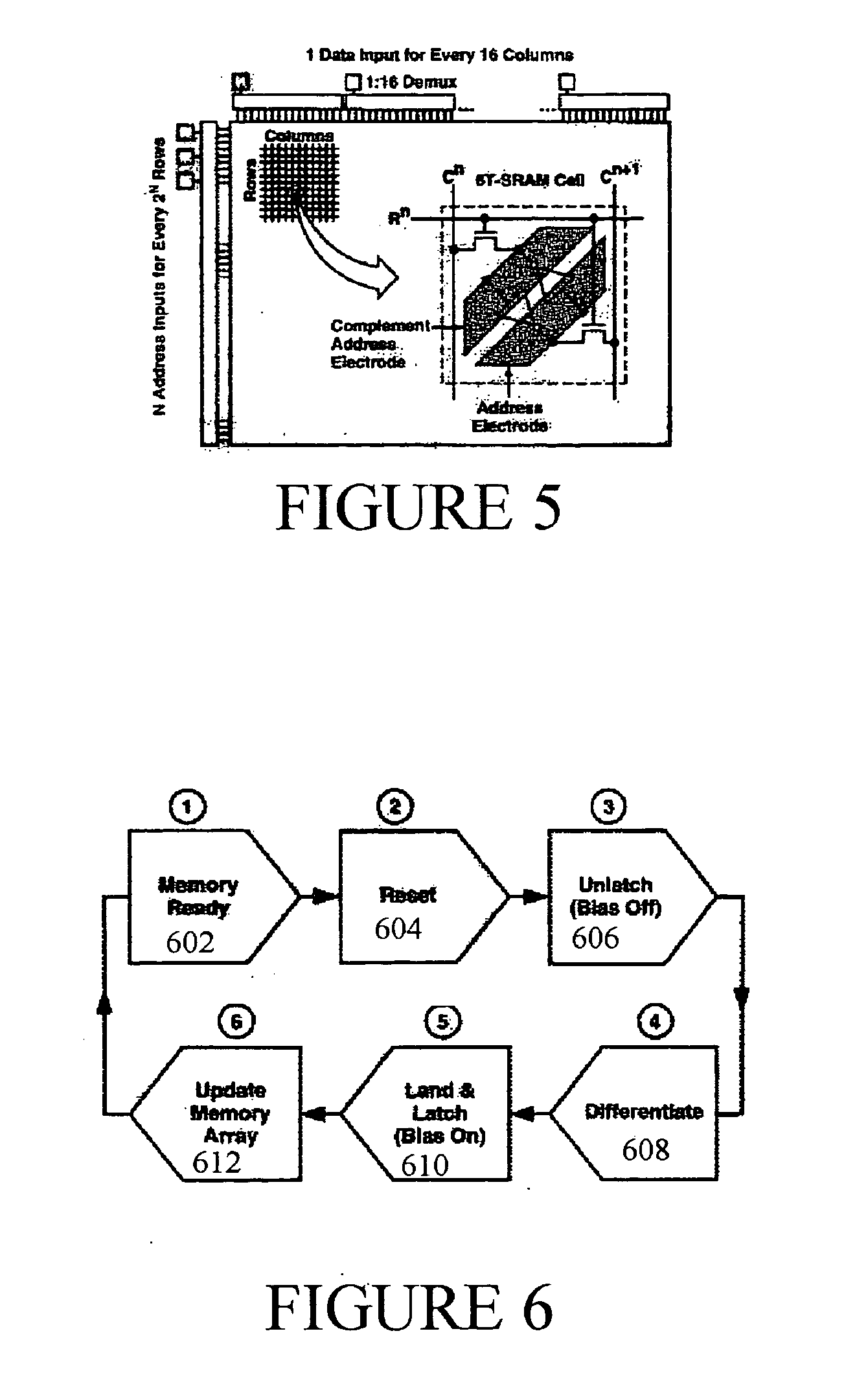Method and apparatus for stereoscopic display using column interleaved data with digital light processing
a stereoscopic display and digital light processing technology, applied in the field of stereoscopic display using, can solve the problems of increased complexity, high cost of multiple display devices, and inability to regulate color of chips, so as to avoid noticeable flicker, reduce the cost of multiple display devices, and improve the effect of stereoscopic display
- Summary
- Abstract
- Description
- Claims
- Application Information
AI Technical Summary
Benefits of technology
Problems solved by technology
Method used
Image
Examples
Embodiment Construction
[0098] The fundamental problem of stereoscopic imaging is the display of two perspective images in such a way that they appear simultaneous to an observer and in such a way that the each eye sees only the perspective image that corresponds to it. There are many systems in existence that provided this capability for stereo viewing by various different methods. The problem solved by this invention is the display of 3D stereoscopic images using DMD based optical systems configured in several different ways including the following: Single chip DMD with 3-color wheel; Single chip DMD with 4-color wheel; Dual chip DMD with 2-color wheel; Dual chip DMD with 3-color wheel; and Three chip DMD systems.
[0099] For each system configuration above there are one or more methods by which stereoscopic 3D display can be achieved. Using the DMD technology from Texas Instruments offers several advantages over other 3D methods. Properties inherent in the DMD chip help to reduce crosstalk between the ey...
PUM
 Login to View More
Login to View More Abstract
Description
Claims
Application Information
 Login to View More
Login to View More - R&D
- Intellectual Property
- Life Sciences
- Materials
- Tech Scout
- Unparalleled Data Quality
- Higher Quality Content
- 60% Fewer Hallucinations
Browse by: Latest US Patents, China's latest patents, Technical Efficacy Thesaurus, Application Domain, Technology Topic, Popular Technical Reports.
© 2025 PatSnap. All rights reserved.Legal|Privacy policy|Modern Slavery Act Transparency Statement|Sitemap|About US| Contact US: help@patsnap.com



